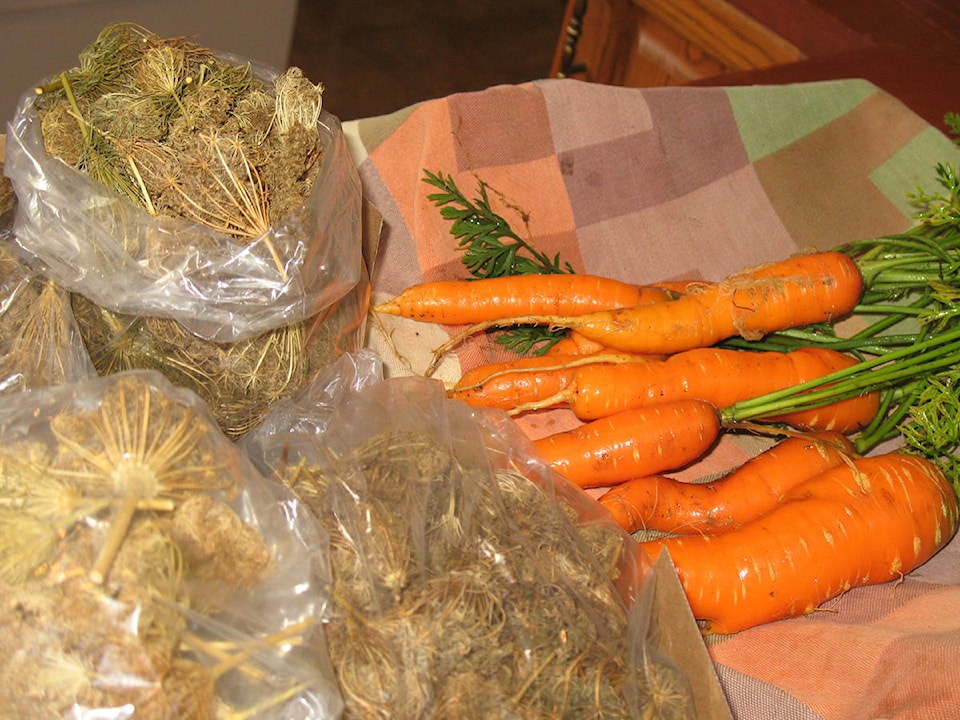By Mary Lowther
Authorities say that carrot seeds should be viable for three years, so the seeds my brother-in-law Andrew gave me in 2018 should be good to sow again next year. Since these carrots grew well this year and taste great, I’m letting a few of them go to seed because carrots are biennials and these seeds can be sown the following year in 2022. I’ll sow the rest of his seeds next spring and every three weeks till mid August and use them all up. He gave me a ton of seeds so it’s a good thing we eat a lot.
Our sandy soil dries out quickly and I find I can sow carrots usually mid-April and then every three weeks until late July. Often these last sown carrots grow through the winter to produce large enough roots the following spring. I’ve tried several different varieties and they all seem to work equally well regardless of the season, even though some indicate that they’re better for one season or another.
The ones I sowed this year are all from Andrew’s saved seed and they turned out great! I store his seed in my cold pantry and squeeze out the seeds from the seed heads just before I plant them. I dig under the previous cover crop as soon as the soil is workable, sprinkle a quarter inch of old compost over the bed along with four litres of organic fertilizer per hundred square feet and dig this into the top six inches, creating a soft seedbed bereft of stones. We need old compost and no fresh manure because carrot roots will fork where they touch either, probably due to too much nitrogen. Hard clod lumps will cause them to fork as well. Once their roots have penetrated the top soft six inches or so, they continue just fine into the lower soil.
I sow seeds by hand in two rows about an inch apart down one-third the length of one side of the bed, and another two rows down the middle and another two down the other side so that each double row is one foot apart. Once the seedlings are up I lay a soaker hose between each double row, ready to water them twice a week when the weather gets dry and sow the next third of the bed in the same manner. About this time I scratch in a bit of fertilizer along both sides of the first rows. Three weeks later I continue on with the last third of the bed and continue to side dress with fertilizer every three weeks. I also sprinkle compost tea over them every two weeks.
Sown this way, carrots come up thickly and must be thinned or they won’t grow very large. If one didn’t want to bother with the thinning, one could spend more money for seeds on a tape that when sown keeps the seeds far enough apart that they don’t need it. I thin them once and then eat the thinnings after that.
I pull out all the large carrots about this time and pull off the hoses, leaving the small ones to develop over the winter. I cut off the stalks one inch from the root, brush off the soil and store the roots in a damp sand or coir (coconut fibre) filled box in the cold pantry. I’ve tried leaving them in the soil to dig up during the winter but I end up with more if I bring them inside for cold storage because they don’t split or get eaten by hungry varmints. Evidently David and I aren’t the only ones who like carrots.
Please contact mary_lowther@yahoo.ca with questions and suggestions since I need all the help I can get.
